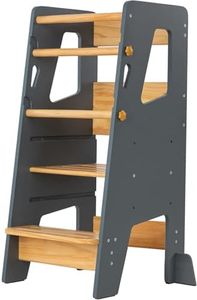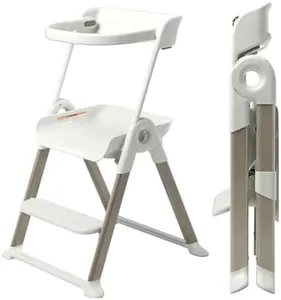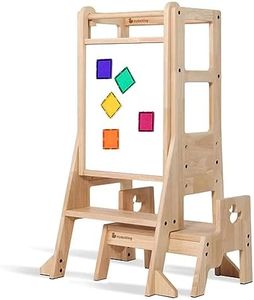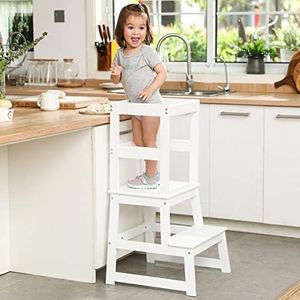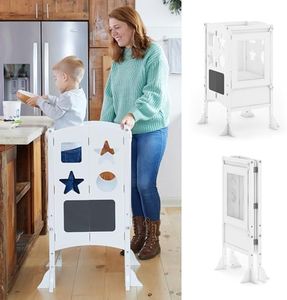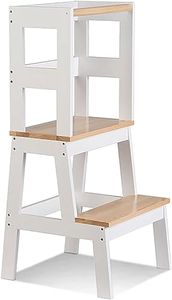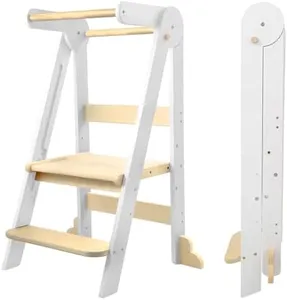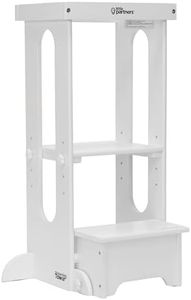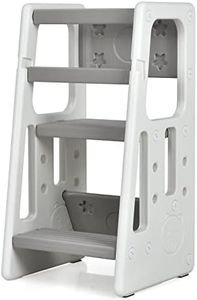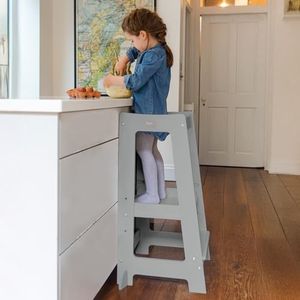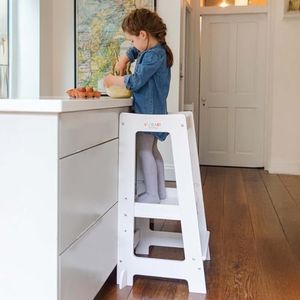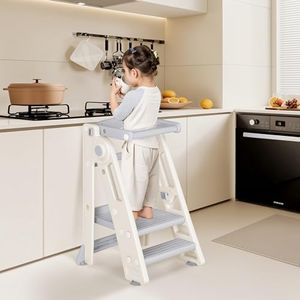We Use CookiesWe use cookies to enhance the security, performance,
functionality and for analytical and promotional activities. By continuing to browse this site you
are agreeing to our privacy policy
10 Best Learning Tower For Toddlers
From leading brands and best sellers available on the web.Buying Guide for the Best Learning Tower For Toddlers
Choosing a learning tower for toddlers can really enhance a child's involvement and safety in areas like the kitchen. The right learning tower gives your child a safe boost, allowing them to join in on daily activities at counter height, helping their development, independence, and family bonding. To find the best fit, it’s important to consider a few key features that focus on safety, adjustability, and ease of use. Thinking about where and how you’ll use the tower, plus how your child grows, helps guide your decision.Safety FeaturesSafety is the top priority for a learning tower, since toddlers tend to be wiggly and curious. Safety features include things like strong guard rails, stable bases, non-slip surfaces, and secure steps. Some towers also offer locking mechanisms or anti-tip designs. When choosing, make sure the tower has high enough sides to prevent falls, sturdy construction that doesn’t wobble, and slip-resistant steps. If you know your toddler is especially active, look for towers with extra features like additional railings or a broader base for even more security.
Height AdjustabilityHeight adjustability refers to how the standing platform can be raised or lowered as your child grows. This is important because a fixed height may quickly become unsuitable as your toddler gets taller or wants more/less independence. Learning towers usually have platforms that adjust to at least two or three different heights. For very young toddlers, a lower starting point is key; for older children, being able to raise the platform means the tower stays useful longer. Think about your child's age and how much you want to use the tower over the months or years to come.
Size and FoldabilityThe overall size of the learning tower and whether it can fold for storage matters because kitchens or play spaces can be tight. Some towers are compact and easy to tuck away or fold up, while others are bulkier and always need a dedicated spot. If you have limited space or plan to move the tower frequently, look for lightweight or foldable models. Bigger, more substantial towers might be better if you don’t need to move them and want a more permanent fixture for your child’s activities.
Material and Ease of CleaningMaterials—typically wood or plastic—affect how easy it is to keep the tower clean as well as how durable it is. Wood towers are classic and sturdy but may need occasional touch-ups, while plastic can be wiped down quickly and resist stains or water. If your toddler loves messy play or will use the tower during cooking, choose a material that stands up well to frequent cleaning. Also check for smooth edges and non-toxic finishes, important for safety and maintenance.
Weight Limit and Age RangeThe weight limit gives you an idea of how much your learning tower can safely hold, which usually lines up with the recommended age range. Some towers are built just for toddlers, while others can handle older or heavier children. Pay attention to these limits: if multiple kids will use the tower or your child is on the higher or lower end for their age, choose accordingly. This ensures long-term, safe use.
Additional FeaturesExtras such as chalkboards, whiteboards, or convertible designs (that turn into tables or slides) can add to the learning tower’s value. These features can make the tower more engaging for your toddler, giving it uses beyond just boosting them up. Think about whether your child would enjoy these kinds of features and if you want the tower to function in multiple ways, rather than just as a step stool.
